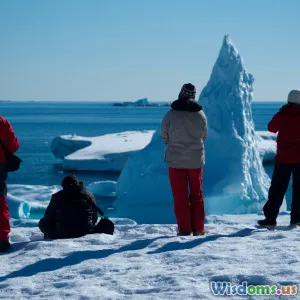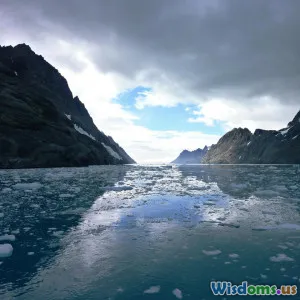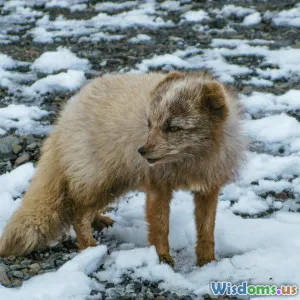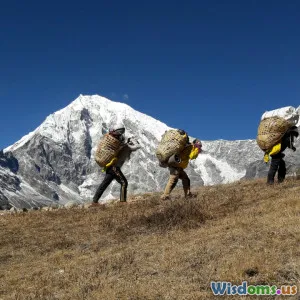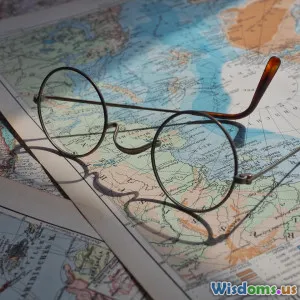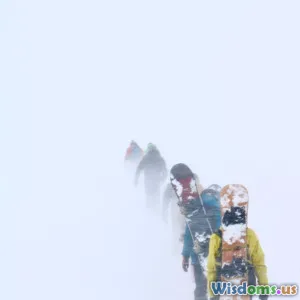
Should You Use Skis or Snowshoes for Arctic Trekking
10 min read Explore the pros and cons of skis and snowshoes for Arctic trekking to optimize your adventure and safety in extreme winter conditions. (0 Reviews)
Should You Use Skis or Snowshoes for Arctic Trekking?
When it comes to Arctic trekking, the stakes are high. You’re not just battling the freezing temperatures or the unpredictable weather—you’re fighting for every step, every ounce of energy, and ultimately your safety. Choosing the right snow travel equipment isn’t just a matter of preference; it’s a decision that can impact your entire expedition. The eternal debate among polar adventurers boils down to one question: Should you use skis or snowshoes for Arctic trekking?
This article explores the nuances behind this choice, breaking down the dynamics of Arctic terrain, the pros and cons of each option, essential considerations like weight, speed, and ease-of-use, and real-world insights from seasoned explorers.
Understanding Arctic Terrain and Conditions
Before deciding on skis or snowshoes, it’s critical to grasp the conditions you’ll face. The Arctic landscape can range from hard-packed snow and ice to deep powder and shifting snowdrifts. Temperatures can plummet below -40 degrees Celsius, and wind speeds can create precarious wind slabs.
- Snow Texture: In the cold, dry Arctic winter, snow tends to be light and powdery. However, surface snow can glaze over to become ‘crusty’ due to freeze-thaw cycles during the brief summer months or sunny periods.
- Topography: Arctic routes often involve undulating terrain, glacier crossings, sastrugi (rugged snow ridges), and occasional crevasses, requiring agility and balance.
This variety means the equipment must handle diverse challenges, from buoyancy in deep snow to maneuverability on icy crusts.
The Case for Skis in Arctic Trekking
Advantages of Skis
-
Speed & Efficiency: Skis enable covering vast distances more quickly. Their gliding mechanism significantly reduces the energy cost of each stride compared to lifting your foot with snowshoes. For instance, polar explorers like Robert Swan, who completed a solo South Pole trek, relied on skis for efficient long-distance travel.
-
Weight Distribution: Skis distribute weight over a longer surface area, reducing the risk of sinking into soft snow. This flotation is critical in powdery sections where deep sinking can slow progress tremendously.
-
Glide on Hardpack: When the snow surface hardens, skis glide smoothly, maintaining momentum and reducing fatigue. This is particularly useful on frozen lake crossings or hardened trail sections common in Alaska or Greenland.
-
Versatility on Terrain: With modern bindings and ski skins, skis can perform well uphill by preventing backward slips, enhancing climbing capability.
Disadvantages of Skis
-
Technical Skill Required: Skiing in Arctic conditions isn’t just downhill fun. It demands solid cross-country or backcountry skiing skills. Managing balance on sastrugi and uneven ice fields can be challenging.
-
Equipment Bulk and Weight: Skis, poles, and boots tend to be bulkier and heavier than snowshoe gear. This can add to the overall pack weight.
-
More Restricted Maneuverability: Skis are less maneuverable in forested or extremely rugged terrain. Tight maneuvering is difficult compared to snowshoes.
The Case for Snowshoes in Arctic Trekking
Advantages of Snowshoes
-
Simplicity and Ease of Use: Snowshoes require minimal technical skill. They mimic normal walking, making them accessible for beginners.
-
Excellent Flotation: Like skis, snowshoes distribute weight to prevent sinking. Modern designs with aggressive crampons can grip icy crusts and slopes well.
-
Maneuverability: Snowshoes excel in complex, uneven terrain such as rocky Arctic tundra, areas with scattered shrubbery, or broken ice fields where skis might be cumbersome.
-
Compact Gear: Snowshoes are relatively compact to store and lighter than typical ski setups.
Disadvantages of Snowshoes
-
Less Efficient Movement: Snowshoe walking is slower and demands more energy to lift each foot out of the snow. Over long distances, this can cause quicker fatigue.
-
Poor Glide on Hard Pack: Unlike skis, snowshoes have little to no gliding surface, which makes traveling on hardpacked snow less efficient.
-
Higher Physical Strain: The lifting action can stress knees and hips, especially during multi-day treks.
Real-World Insights and Expert Opinions
-
According to Christian Stangl, a noted adventurer who skied across Arctic routes, “Skis transform the experience from a grinding slog to a rhythmic dance. But it requires practice and reliable gear preparation.”
-
Contrastingly, polar guide Sarah McNair-Landry states, “Snowshoes are the trustworthy workhorse for unpredictable terrain. When you need to move confidently over bone-crushing crusts or uneven fields, snowshoes offer unmatched stability.”
Expedition records offer insight as well: The famed Trans-Antarctic Winter Crossing teams and Greenland ski expeditions almost exclusively use skis for sustained travel, focusing on speed and endurance. Smaller, scientific Arctic teams working on varied terrain with frequent stops might prefer snowshoes for their versatility.
Key Factors When Choosing Between Skis and Snowshoes
Terrain Profile
Are you traversing wide, open, and relatively flat icy expanses or complex rugged tundra? Open white plains favor skis, while mixed terrain conditions favor snowshoes.
Expedition Length and Goals
For multi-day or longer distances where speed matters, skis gain the edge. Shorter exploratory field trips prioritize flexibility, where snowshoes shine.
Physical Fitness and Expertise
Skiing requires specific training; novices might spend disproportionate energy and risk injury if inadequately skilled. Snowshoes offer a less steep learning curve.
Equipment and Logistics
Skis often require more additional gear: poles, skins, boots designed for skiing. Consider transport limits and repair possibilities in remote areas.
Weather and Snow Conditions
Anticipate hard crusts versus powder snow throughout the trek. Skis are better on crust but may struggle in extreme powder; snowshoes handle powder well but lack glide.
Tips for Maximizing Efficiency Regardless of Choice
-
Technique Training: Whether skiing or snowshoeing, practice beforehand with loaded packs replicating expedition conditions.
-
Proper Footwear: High-quality insulated boots designed for your chosen method are critical for warmth and support.
-
Adjust Bindings Carefully: Ensure bindings allow comfortable movement and quick release for emergencies.
-
Monitor Snow Conditions: Adjust your pace and techniques daily to snow changes.
-
Complementary Gear: Use poles to increase stability and reduce muscle fatigue.
Conclusion: Tailoring Equipment to Your Arctic Adventure
There’s no one-size-fits-all answer to the skis versus snowshoes question for Arctic trekking. The decision hinges on your expedition style, terrain challenges, duration, and physical preparedness.
Skis excel by enhancing speed, efficiency, and ease over long, relatively straightforward snow fields, making them preferred for committed polar expeditions. Snowshoes, on the other hand, offer adaptability, safety, and straightforward logistics, often better for shorter treks, complex terrain, and those less experienced.
Selecting the right travel method could mean the difference between an energized traverse through Arctic beauty and a grueling, exhausting ordeal. Study your route carefully, respect the environment, and match your gear to your skills and objectives—for an unforgettable and safe Arctic journey.
References
- Swan, Robert. Towards the South Pole. Antarctic Press, 1987.
- McNair-Landry, Sarah. “Arctic Trekking: Gear and Skills.” Polar Journal, 2020.
- Stangl, Christian. Interview on Extreme Polar Expeditions, Adventure Podcast, 2022.
- National Snow and Ice Data Center (NSIDC), "Arctic Snow Conditions," 2023.
Embark wisely—choose what moves you best across the white frontier.
Rate the Post
User Reviews
Popular Posts










